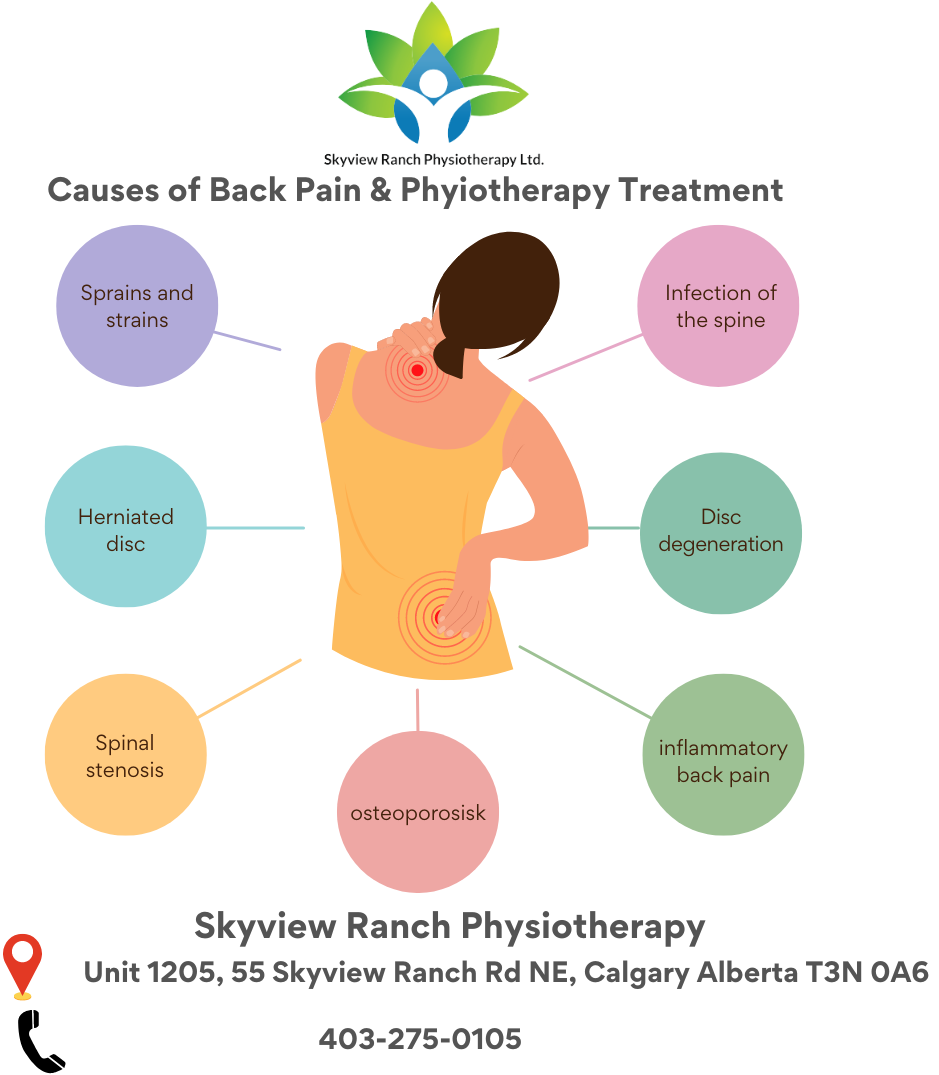FAQ on Physiotherapy For Back pain
Is Physiotherapy Good for Back Pain?
Yes, physiotherapy is good for back pain. Physiotherapists commonly treat back pain caused by muscle tension, poor posture, postural imbalances, joint instability, and injury. Through evidence-based treatments such as exercise, manual therapy, and patient education on proper movement patterns and posture, a physiotherapist can help to alleviate pain and improve mobility in the short-term. They can also work with their patients to build long-term resilience and reduce the risk of future back pain or injury.
How Does a Physiotherapist Treat Back Pain?
A physiotherapist will typically begin treatment by taking a detailed history of the patient’s symptoms and medical background to identify any underlying factors that may be contributing to the issue. Physical assessments will then be conducted to assess strength, range of motion and flexibility of the muscles and joints. Based on these findings, an individualized treatment program can then be designed to meet the needs of each specific patient. This program may include exercises to improve range of motion; stretching exercises to reduce muscle tension; manual therapy techniques such as joint mobilization or manipulation; home programs; lifestyle changes; ergonomic advice; postural re-education; taping techniques and other modalities such as ultrasound or electrical stimulation if necessary.
Which Type of Physiotherapy is Best for Back Pain?
The type of physiotherapy best suited for your particular back pain largely depends on its cause/s (e.g., muscle strain vs disc problems). Your physiotherapist can advise you on which type(s) of treatment they believe would benefit you most. Generally speaking though, a combination approach incorporating different approaches (e.g., exercise prescription combined with manual therapy) is often most effective at reducing pain quickly while also improving your overall mobility in the short-term and helping you build resilience against potential future flare ups.
Browse: physiotherapy for back pain.
Is Massage Or Physio Better for Back Pain?
This really depends on an individual’s condition – both massage therapists and physiotherapists are able to provide relief from back pain but depending on what is causing the issue one may be more suitable than the other in certain cases. For instance, if tightness in certain muscle groups is causing your back pain then massage therapy may be more beneficial but if biomechanical issues such as instability are playing a role then physiotherapy might better address this as it includes exercise prescription which could help strengthen weak muscles or retrain poor movement patterns which contribute to joint instability/painful areas.
That said however it’s important that both practitioners take a comprehensive approach when assessing any musculoskeletal issue – assessment should look at all contributing factors (e.g., lifestyle factors such as sleep quality/activity levels) rather than just focussing solely on one area so that an appropriate treatment plan based off this assessment can be developed that takes into account all influencing variables .
How Many Physio Sessions for Back Pain?
The number of sessions required for someone with back pain varies greatly depending on several factors including severity & duration of symptoms, underling cause/s behind them & responsiveness to treatment given thus far . It’s important to note that responses differ from person person since everyone has unique physical characteristics & presentation which need tailored management plans . Generally speaking though , 4 -6 sessions are usually recommended initially although this may increase if response is slow or cease if desired outcomes are achieved relatively quickly . It’s important not to rush through recovery either & make sure each session builds upon previous ones until full resolution has been reached .
Contact: Physiotherapy in Calgary NE
Is Walking Good For Back Pain?
Yes walking can be beneficial for those suffering from back pain provided there are no contraindications present i..e red flags indicating further investigation or referral needed first or aggravating postures/movements avoided due to significant discomfort experienced during them..Pacing & gentle walking can help promote circulation & ease lower spine compression allowing progressions towards normal activities easier whilst strengthening core muscles assisting in maintaining good posture essential for safe movement.It’s important however not overdo it as overloading previously weakened structures won’t bring about desired outcomes nor does it promote recovery success…So ensure you start gently building up distance gradually according too how you feel after each walk with regular rest breaks needed…Finally seek professional advice from qualified healthcare providers who can assess current health status before beginning any form of exercise regime related too any health conditions.
Contact: Deepak The Best Physio in NE Calgary
Should I Rest Or Exercise With Back Pain?
Resting initially when severe acute episodes occur helps prevent further tissue damage following sudden injuries however prolonged periods without movement lead too deconditioning increasing susceptibility too flare ups. Therefore combining rest with gentle graduated activity helps maintain physical fitness promoting healing rates whilst allowing relief from persistent discomfort often associated with certain conditions. Your practitioner will recommend how much activity being done at home between sessions

